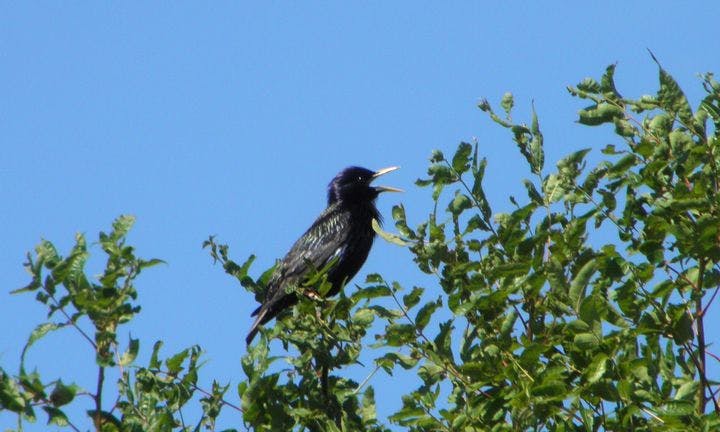Spring 2009
The Lullaby of Taxis
– The Wilson Quarterly
European blackbirds can give pitch-perfect renditions of urban noises, even copying the annoying sound of a golf cart backing up at a golf course.
When reports started to trickle in a few years ago about European blackbirds imitating ambulance sirens, car alarms, and cell phone ringtones, researchers were skeptical, writes Dawn Stover, an editor at large for Popular Science magazine. Doubting scientists asked for tapes. What came back were “pitch-perfect” renditions of urban noises, even a recording made near a golf course of birds copying the annoying sound of a golf cart backing up.
Animals are literally changing their tunes in response to a growing human din, Stover says. While bird and animal calls were once thought to be randomly scattered across the acoustic spectrum, many researchers now say the distribution is not accidental.
When part of the spectrum is invaded by the noise of moving cars, passing ships, and overhead jets, animals begin to adapt. Great tits in the Netherlands are switching to higher frequencies to avoid being drowned out by low-frequency traffic noise. European robins now sing primarily at night, and researchers think they do it to avoid interference from street noise. In Berlin, nightingales sing louder on weekday mornings than on weekends, when there is less traffic to contend with. And male blackbirds have begun to imitate sirens and ringing cell phones to boost their evolutionary odds: An expanded song repertoire signals that a bird has reached maturity, and female blackbirds prefer mature males.
While most animal noise research has focused on birds, some scholars think undersea noise is increasing even faster than urban clamor, affecting whales and other animals. About twice as many ships ply the oceans today as in the 1960s, and they are bigger, faster, and louder. Oceans have a “deep sound channel” in which noise can travel for hundreds of miles. Humpback whales are thought to dive down to the channel and sing into it to communicate with one another, but this channel can also transmit noise from offshore drilling and commercial shipping to distant locations. Canadian scientists have found that beluga whales change their frequencies in response to the presence of icebreakers, and other researchers have reported that orcas have altered their calls.
If such trends continue, new subspecies may develop that are unable to understand one another. And low-frequency–bound species could lose their ability to communicate. Could this be the end of orioles, great reed warblers, and house sparrows, which can’t sing in the higher registers? Stover concludes that “humans, already powerful conductors of the material world, may be extending their fierce control to the audible one.”
* * *
THE SOURCE: “Not So Silent Spring” by Dawn Stover, in Conservation Magazine, Jan.–March 2009.
Photo courtesy of Flickr/Robert Nunnally
